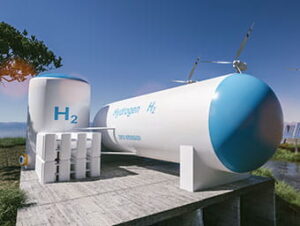Household underfloor heating has become an increasingly popular choice for modern homes, providing an efficient and comfortable way to heat indoor spaces. Unlike traditional radiators, which concentrate heat in specific areas, underfloor heating systems distribute warmth evenly across the floor. This not only ensures a more consistent temperature but also creates a cozy environment, as the heat radiates from the ground up, making every corner of the room feel warm and inviting. Check our shop for the best heating cables and order now!
There are two main types of underfloor heating systems used in Households: electric and water-based (hydronic). Electric systems involve the installation of heating mats or cables beneath the floor surface, which are then connected to the home’s electrical system. On the other hand, water-based systems use a network of pipes through which hot water circulates, providing a more energy-efficient solution, particularly in larger spaces. Both options are suitable for various types of flooring, including tile, wood, and carpet, allowing homeowners to choose the system that best fits their needs. Let’s visit SVR Trace. we are going to review this type of heating cables.
Household underfloor heating offers several key benefits. First and foremost, it provides a more even distribution of heat, eliminating cold spots and allowing for lower overall energy consumption. This can lead to reduced heating bills, making it an attractive option for cost-conscious homeowners. Additionally, underfloor heating frees up wall space that would otherwise be occupied by radiators, giving more flexibility for interior design.
Moreover, underfloor heating is a great choice for people looking to improve indoor air quality. Since the system operates at lower temperatures and doesn’t rely on forced air circulation, it minimizes the spread of dust and allergens throughout the home, creating a healthier living environment.
In conclusion, Household underfloor heating is an efficient, cost-effective, and comfortable solution for modern homes. With its ability to provide consistent warmth and improve both aesthetics and air quality, it’s no wonder that more people are turning to this innovative heating method. Visit our blog page for the newest content about industrial products and household products in the field of the underfloor heating!
- What is household underfloor heating, and why is it becoming popular?
- What are the different types of underfloor heating systems, and how do they differ?
- How does underfloor heating work, and what are the key components involved?
- What are the major benefits of installing underfloor heating in a modern home?
- How does underfloor heating compare to traditional heating systems in terms of performance and comfort?
- Is underfloor heating energy-efficient and cost-effective for households in the long run?
- What should homeowners be aware of before installing underfloor heating systems?
- How easy is it to maintain an underfloor heating system, and what are some common issues?
- What is the environmental impact of underfloor heating, and how can it contribute to a greener home?
- What are the latest trends and innovations in underfloor heating that homeowners should watch out for?
These are the questions that will be answered in this article. So lets continue!
Table of contents
- Introduction to Household Underfloor Heating
- Types of Underfloor Heating Systems
- How Underfloor Heating Works: A Step-by-Step Guide
- Benefits of Underfloor Heating in Modern Homes
- Comparing Underfloor Heating with Traditional Heating Methods
- Energy Efficiency and Cost-Effectiveness
- Installation Process: What Homeowners Need to Know
- Maintenance and Troubleshooting Common Issues
- Environmental Impact of Underfloor Heating Systems
- Future Trends and Innovations in Underfloor Heating Technology
Types of Underfloor Heating Systems
Underfloor heating systems have gained widespread popularity in modern Household settings, offering an energy-efficient and comfortable way to heat spaces. There are two main types of underfloor heating systems commonly used in people: electric and water-based (hydronic). Each system has its own unique benefits and is suited to different Household needs depending on factors like space size, energy preferences, and installation requirements.
Electric Underfloor Heating Systems
Electric underfloor heating systems are particularly common in smaller Household spaces like bathrooms and kitchens. These systems use heating mats or cables that are installed directly beneath the floor surface. When connected to the home’s electrical system, these elements heat the floor evenly, providing a warm and cozy environment. One of the key advantages of electric systems is their ease of installation, especially in existing people, as they don’t require any changes to the plumbing. They are generally faster to install and can be controlled with a simple thermostat.
However, for larger Household areas, electric systems can become more costly to run over time due to the higher electricity consumption. Therefore, they are often recommended for supplementary heating in smaller rooms rather than whole-house solutions.
Water-Based (Hydronic) Underfloor Heating Systems
In contrast, water-based underfloor heating systems are highly efficient for larger Household spaces. These systems involve a network of pipes installed beneath the floor, through which hot water circulates, generating heat that radiates evenly across the room. Hydronic systems are more energy-efficient than electric systems, especially when connected to energy-saving technologies such as heat pumps or solar panels. While the installation process can be more complex and costly, particularly for existing people, the long-term energy savings make hydronic systems an appealing choice for those looking to heat larger spaces.
Both types of systems can be used with a variety of flooring materials, including tiles, wood, and laminate, giving people flexibility in design. In conclusion, the choice of underfloor heating system for a Household depends on factors such as room size, budget, and energy efficiency goals.
How Household Underfloor Heating Works: A Step-by-Step Guide
Household underfloor heating is an efficient way to heat your home, providing warmth from the ground up. It replaces traditional radiators, creating a more consistent and comfortable indoor environment. To better understand how it works, here’s a step-by-step guide on how Household underfloor heating operates.
Step 1: Installation of the Heating System
The first step in setting up Household underfloor heating is installing either an electric or water-based system. In electric systems, heating cables or mats are placed beneath the floor surface, connected to the Household electrical system. For water-based systems, a series of pipes is installed under the floor through which hot water circulates. These systems are laid out before the final flooring is installed.
Step 2: Insulation Layer
Before any heating elements are placed, an insulation layer is typically installed. This is crucial for Household energy efficiency, as it prevents heat from escaping downward, ensuring that warmth is directed upward into the living space. The insulation keeps the Household system running efficiently, reducing energy waste.
Step 3: Heating Activation
Once the system is in place and connected to the Household power supply or boiler, it is ready to be activated. In electric systems, the heating elements are controlled via a thermostat, allowing homeowners to set the desired temperature. For water-based systems, the hot water flows through the pipes, heating the floor evenly across the Household.
Step 4: Heat Distribution
As the system heats up, warmth radiates from the floor and rises steadily throughout the room. Household underfloor heating provides even temperature distribution, eliminating cold spots that are common with radiators. This method heats the entire floor surface, ensuring every corner of the Household feels comfortable.
Step 5: Temperature Control
Household underfloor heating systems come with advanced thermostats or smart controls. These devices allow homeowners to adjust the temperature according to specific rooms or zones, optimizing energy use and ensuring comfort in different areas of the Household.
In conclusion, Household underfloor heating works by generating heat either through electricity or hot water, providing efficient, evenly-distributed warmth throughout the home.
Benefits of Underfloor Heating in Modern Homes
Underfloor heating has become a highly sought-after feature in modern Household designs due to its numerous benefits. Whether it’s for improved comfort, energy efficiency, or aesthetic appeal, underfloor heating offers a versatile solution that enhances the living experience in any Household. Here’s a closer look at why underfloor heating is a game-changer in modern homes.
1. Enhanced Comfort
One of the most notable benefits of underfloor heating is the level of comfort it provides. Unlike traditional heating systems that concentrate warmth in specific areas, underfloor heating distributes heat evenly across the entire floor. This results in a more consistent temperature throughout the Household, ensuring that every corner of the room feels warm and cozy. In colder seasons, Household members can walk barefoot on a comfortably heated floor, which adds to the overall luxury and comfort.
2. Energy Efficiency
Household underfloor heating systems are designed to be more energy-efficient than conventional radiators. Since the heat is spread evenly at lower temperatures, less energy is required to maintain a warm environment. This reduces energy consumption, making it a cost-effective option for Household heating. Additionally, underfloor heating systems can be paired with renewable energy sources like solar panels or heat pumps, further enhancing their eco-friendly potential.
3. Space-Saving and Aesthetic Flexibility
Underfloor heating eliminates the need for bulky radiators, freeing up wall space for Household design. This flexibility allows homeowners to create more open and clutter-free living spaces, giving more options for furniture placement and interior décor. Whether the Household features sleek, minimalist designs or more traditional aesthetics, underfloor heating offers a seamless solution without compromising style.
4. Improved Air Quality
Since underfloor heating operates at lower temperatures and doesn’t rely on forced air circulation, it reduces the spread of dust, allergens, and pollutants in the Household. This can significantly improve indoor air quality, which is especially beneficial for Household members with respiratory conditions or allergies.
In conclusion, underfloor heating is an excellent investment for any modern Household. With its enhanced comfort, energy efficiency, aesthetic flexibility, and improved air quality, it’s no wonder more people are choosing this innovative heating system for their homes.
Comparing Household Underfloor Heating with Traditional Household Heating Methods
In recent years, Household underfloor heating has gained popularity as a modern alternative to traditional heating systems, such as radiators and forced-air units. While both methods are effective in providing warmth, there are significant differences in how they operate, affect Household comfort, and impact energy consumption. Here’s a comparison between Household underfloor heating and traditional Household heating methods.
1. Heat Distribution
One of the key differences between underfloor heating and traditional heating methods is how heat is distributed. Traditional radiators heat the air near the unit, creating warm spots around the radiator while leaving some areas of the room colder. In contrast, Household underfloor heating spreads warmth evenly across the entire floor surface. This ensures a consistent temperature throughout the Household, eliminating cold spots and creating a more comfortable environment.
2. Energy Efficiency
Household underfloor heating is typically more energy-efficient than traditional systems. Radiators need to operate at higher temperatures to effectively heat a room, while underfloor heating works at lower temperatures due to its even heat distribution. This lower operating temperature results in reduced energy consumption, potentially leading to lower Household energy bills. Furthermore, underfloor heating can be paired with energy-efficient technologies like heat pumps or solar panels, making it an environmentally friendly option.
3. Aesthetic Flexibility
Traditional heating systems, especially radiators, take up space on walls and can interfere with the design of a Household. They often limit furniture placement and can affect the overall aesthetics of a room. On the other hand, Household underfloor heating is completely hidden beneath the floor, freeing up wall space and allowing for more flexibility in interior design. This can be especially beneficial in modern or minimalist people where clean, open spaces are desired.
4. Air Quality and Health
Traditional heating methods, particularly forced-air systems, can circulate dust and allergens throughout the Household, potentially affecting indoor air quality. In contrast, Household underfloor heating operates without moving air, which helps reduce the spread of dust, improving air quality and making it a healthier option for Household members with allergies or respiratory conditions.
In conclusion, Household underfloor heating offers numerous advantages over traditional heating systems, including better heat distribution, energy efficiency, aesthetic flexibility, and improved air quality, making it a great option for modern homes.
Energy Efficiency and Cost-Effectiveness of Household Underfloor Heating
Underfloor heating has become a popular feature in modern homes due to its remarkable energy efficiency and cost-effectiveness. For people looking to reduce their energy consumption and improve heating efficiency, underfloor heating presents an appealing solution. Here’s how it compares to traditional heating methods in terms of energy savings and cost benefits.
1. Lower Operating Temperatures
One of the key factors contributing to the energy efficiency of underfloor heating is its ability to operate at lower temperatures. Traditional heating systems, such as radiators, require water to be heated to around 70-80°C to effectively warm a room. In contrast, Household underfloor heating systems typically run at just 30-40°C due to their even distribution of heat across the floor. This lower temperature requirement translates into reduced energy usage, making underfloor heating a more energy-efficient option for people.
2. Improved Heat Distribution
Household underfloor heating spreads warmth evenly across the entire floor, ensuring that the heat radiates upward into the room. This uniform heat distribution means that the desired temperature can be achieved more efficiently, with less energy wasted in trying to heat cold spots. In traditional heating systems, heat is concentrated near the source (radiators or vents), often leading to uneven temperatures and higher energy consumption to maintain comfort across the Household.
3. Long-Term Cost Savings
Although the initial installation cost of Household underfloor heating systems can be higher than traditional methods, the long-term savings make it a cost-effective choice. The reduced energy consumption means lower Household energy bills over time. Additionally, underfloor heating systems require minimal maintenance and have a long lifespan, further contributing to cost-effectiveness. For people interested in combining this system with renewable energy sources, such as heat pumps or solar panels, the savings can be even more significant.
4. Increased Property Value
Household underfloor heating can also increase the overall value of a home. Many homebuyers view this modern, energy-efficient heating system as a desirable feature, which can lead to a higher resale value for people that invest in this technology.
In conclusion, Household underfloor heating offers a highly energy-efficient and cost-effective solution that not only provides consistent warmth but also reduces long-term energy costs for people.
Installation Process: What Homeowners Need to Know
The installation of Household underfloor heating is an important step in enhancing comfort and energy efficiency in a home. For homeowners considering this upgrade, it’s essential to understand the key steps involved in the installation process, whether for new builds or existing people. Here’s what every Household should know about the installation of underfloor heating systems.
**1. Types of Underfloor Heating**
Before installation begins, homeowners must choose between electric and water-based (hydronic) systems. Electric systems are easier to install in existing people, as they involve laying heating mats or cables directly under the floor. Hydronic systems, which circulate hot water through a network of pipes, are more complex to install and are typically recommended for new builds or major Household renovations.
**2. Preparing the Subfloor**
The installation process begins by preparing the subfloor. It must be clean, level, and free of any debris. In some people, insulation boards are installed beneath the heating system to prevent heat from escaping downward. This is a crucial step in improving the Household’s energy efficiency and ensuring that the heat is directed upward into the living space.
3. Laying the Heating System
Once the subfloor is ready, the heating elements are laid out. For electric systems, this involves spreading out heating mats or cables in a pre-determined pattern. For water-based systems, a network of pipes is installed. Homeowners should work with professionals who will carefully plan the layout to ensure even heat distribution across the Household. Proper installation is key to avoiding cold spots or inefficient heating in any part of the Household.
4. Final Flooring
After the heating system is in place, the final flooring is installed. Household underfloor heating systems are compatible with a wide range of flooring materials, including tile, wood, and laminate. Homeowners need to ensure that the chosen flooring allows for efficient heat transfer.
5. Testing and Controls
Once the installation is complete, the system should be tested to ensure it is functioning correctly. Homeowners can also install thermostats or smart controls to adjust the temperature in different areas of the Household, maximizing comfort and efficiency.
In conclusion, installing Household underfloor heating requires careful planning and professional execution. With proper installation, people can enjoy an efficient, evenly-heated home for years to come.
Maintenance and Troubleshooting Common Issues with Household Underfloor Heating
Household underfloor heating systems are designed to provide efficient and consistent warmth, but like any heating system, they require regular maintenance and attention to ensure optimal performance. Understanding common issues and their solutions can help homeowners maintain a comfortable living environment and avoid costly repairs.
1. Regular Maintenance
To keep Household underfloor heating systems running smoothly, regular maintenance is crucial. For electric systems, this involves checking the heating cables or mats for any signs of damage or wear. It’s also important to inspect the thermostat and ensure it is accurately controlling the temperature. For water-based systems, homeowners should check the pressure in the system and ensure that there are no leaks in the pipes. Regularly flushing the system to remove any debris or air bubbles can help maintain efficiency.
2. Common Issues and Troubleshooting
Several common issues can arise with Household underfloor heating systems, each with specific troubleshooting steps:
– Uneven Heating: If some areas of the Household feel warmer than others, it may be due to improper installation or air trapped in the system. For electric systems, ensure that the heating mats or cables are evenly spaced. For hydronic systems, bleeding the pipes to remove air bubbles can help achieve uniform heating.
– **System Not Heating**: If the system fails to heat, check the thermostat settings and ensure that it is correctly programmed. For electric systems, inspect the circuit breaker to ensure it hasn’t tripped. For water-based systems, verify that the boiler or heat source is functioning properly and that the system pressure is at the correct level.
– **Strange Noises**: Unusual noises such as gurgling or banging can indicate air trapped in the pipes or issues with the pump. In hydronic systems, bleeding the pipes can often resolve these noises. If the problem persists, it may be necessary to consult a professional for further inspection.
**3. Professional Help**
While some minor issues can be resolved with basic troubleshooting, it’s important for homeowners to seek professional help for more complex problems or if the system requires extensive repairs. Regular servicing by a qualified technician can help identify potential issues before they become major problems, ensuring that the Household underfloor heating system remains reliable and efficient.
In conclusion, proper maintenance and prompt troubleshooting are essential for the longevity and performance of Household underfloor heating systems. By staying vigilant and addressing issues early, homeowners can enjoy consistent warmth and comfort throughout their homes.
Environmental Impact of Household Underfloor Heating Systems
Household underfloor heating systems are increasingly recognized for their environmental benefits, offering a more sustainable alternative to traditional heating methods. By improving energy efficiency and reducing carbon footprints, these systems contribute positively to environmental conservation.
1. Energy Efficiency
One of the key environmental advantages of Household underfloor heating is its superior energy efficiency. Unlike traditional radiators, which need to operate at higher temperatures to effectively heat a room, underfloor heating systems function efficiently at lower temperatures. This is because they distribute heat evenly across the floor, minimizing energy wastage and ensuring that the entire room reaches a comfortable temperature with less energy. As a result, people using underfloor heating can significantly reduce their overall energy consumption, which directly contributes to lower greenhouse gas emissions.
2. Integration with Renewable Energy
Household underfloor heating systems are compatible with renewable energy sources, further enhancing their environmental benefits. For example, underfloor heating can be paired with heat pumps or solar panels, which are environmentally friendly alternatives to conventional energy sources. By integrating these technologies, people can reduce their reliance on fossil fuels and decrease their carbon footprint. This synergy not only helps in minimizing environmental impact but also promotes the use of clean, renewable energy in Household heating.
3. Improved Indoor Air Quality
Another environmental benefit of Household underfloor heating is its positive effect on indoor air quality. Traditional heating systems, especially those that rely on forced air, can circulate dust, allergens, and other pollutants throughout the home. In contrast, underfloor heating operates without moving air, which reduces the spread of airborne particles and helps maintain a healthier indoor environment. This is particularly advantageous for people with allergies or respiratory conditions, contributing to overall better indoor air quality.
In conclusion, Household underfloor heating systems offer significant environmental benefits through their energy efficiency, compatibility with renewable energy sources, and improved indoor air quality. By choosing this modern heating solution, people can enjoy a more sustainable and eco-friendly approach to home heating, contributing positively to environmental conservation.
Future Trends and Innovations in Household Underfloor Heating Technology
As technology continues to advance, the future of Household underfloor heating promises exciting innovations that will further enhance energy efficiency, comfort, and sustainability. Here’s a glimpse into some of the emerging trends and technologies shaping the future of underfloor heating systems.
1. Integration with Smart Home Technology
One of the most significant trends in Household underfloor heating is the integration with smart home technology. Smart thermostats and control systems are becoming increasingly sophisticated, allowing homeowners to manage their underfloor heating systems with precision. These smart controls can learn user preferences, optimize heating schedules, and be controlled remotely via smartphone apps. This integration not only improves comfort but also enhances energy efficiency by adjusting heating based on real-time data and occupancy patterns.
2. Enhanced Energy Efficiency
Future advancements in Household underfloor heating technology will focus on improving energy efficiency. Innovations such as advanced heat pumps and improved thermal insulation materials are set to further reduce energy consumption. Newer systems will incorporate better heat-retention features and more effective temperature regulation, ensuring that homes stay warm with minimal energy use. These advancements will contribute to lower energy bills and a reduced carbon footprint, aligning with global efforts to promote sustainability.
3. Use of Sustainable and Eco-Friendly Materials
The development of sustainable and eco-friendly materials for underfloor heating systems is another important trend. Future systems will increasingly utilize recyclable and environmentally friendly components, such as low-impact insulation materials and eco-conscious pipe options. This shift will help minimize the environmental impact of Household underfloor heating installations and align with broader sustainability goals.
4. Integration with Renewable Energy Sources
The integration of underfloor heating systems with renewable energy sources is expected to become more prevalent. Advances in solar thermal technology and geothermal energy will allow for more efficient and eco-friendly heating solutions. By harnessing renewable energy, future Household underfloor heating systems will offer even greater environmental benefits and energy savings.
5. Improved System Diagnostics and Maintenance
Innovations in diagnostics and maintenance technologies will enhance the reliability and longevity of Household underfloor heating systems. Future systems will feature advanced sensors and monitoring tools that can detect and address issues before they become major problems. This will simplify maintenance, reduce downtime, and ensure that systems operate at peak efficiency.
In conclusion, the future of Household underfloor heating technology is marked by exciting advancements that promise greater efficiency, sustainability, and comfort. As these trends continue to evolve, homeowners can look forward to more innovative and eco-friendly heating solutions.
FAQs
1. What is Household underfloor heating?
Household underfloor heating is a system installed beneath the floor surface to provide consistent, even warmth throughout a room. It can be electric or water-based (hydronic) and is known for its energy efficiency and comfort.
2. How does underfloor heating work?
Underfloor heating systems work by distributing heat across the floor. Electric systems use heating cables or mats, while water-based systems circulate hot water through pipes. The heat rises evenly from the floor, creating a comfortable indoor environment.
3. Can underfloor heating be installed in an existing Household?
Yes, underfloor heating can be retrofitted into existing Households, though it is more straightforward to install in new builds or during major renovations. Electric systems are generally easier to install in existing floors compared to water-based systems.
4. What are the benefits of underfloor heating?
The benefits include even heat distribution, improved energy efficiency, reduced energy bills, increased design flexibility (as it does not require wall space), and improved indoor air quality by reducing dust and allergens.
5. Is underfloor heating compatible with all flooring types?
Yes, underfloor heating is compatible with various flooring types, including tile, wood, laminate, and carpet. However, the type of flooring and its thermal conductivity can affect the system’s efficiency.
6. How energy-efficient is underfloor heating?
Underfloor heating is highly energy-efficient as it operates at lower temperatures compared to traditional heating systems. This reduces overall energy consumption and can lead to lower heating bills.
7. What maintenance is required for underfloor heating systems?
Maintenance is generally minimal. Electric systems require occasional checks of the cables and thermostat, while water-based systems need regular checks for leaks, pressure levels, and system flushing.
8. Can underfloor heating be controlled by a thermostat?
Yes, Household underfloor heating systems can be controlled by thermostats, including smart thermostats that allow for precise temperature adjustments and scheduling to optimize comfort and efficiency.
9. How long does it take for underfloor heating to warm up a room?
The warm-up time varies depending on the system and the room’s insulation. Generally, underfloor heating takes longer to reach the desired temperature compared to traditional radiators but provides consistent warmth once fully operational.
10. What are the installation costs for underfloor heating?
Installation costs depend on factors such as system type (electric or water-based), room size, and existing floor conditions. While initial costs may be higher than traditional systems, the long-term savings on energy bills and increased comfort can offset the investment.
In conclusion, Household underfloor heating offers a range of benefits and can be a valuable addition to many homes, enhancing comfort and energy efficiency while providing modern heating solutions.
Conclusion
In conclusion, Household underfloor heating represents a significant advancement in home comfort and energy efficiency. This innovative heating solution offers numerous advantages over traditional systems, including even heat distribution, improved air quality, and enhanced design flexibility. As more homeowners seek efficient and sustainable ways to maintain warmth, underfloor heating is proving to be a compelling choice.
The benefits of Household underfloor heating extend beyond just comfort. Its energy-efficient design helps reduce overall energy consumption, leading to lower utility bills and a smaller carbon footprint. By operating at lower temperatures and integrating with renewable energy sources, underfloor heating systems contribute to a more sustainable future. This alignment with eco-friendly practices is increasingly important as the world moves toward greener technologies.
Moreover, the future of Household underfloor heating looks promising with ongoing advancements in technology. Innovations such as smart home integration, enhanced energy efficiency, and the use of sustainable materials are set to redefine the capabilities of underfloor heating systems. These developments not only promise to improve the performance and reliability of heating systems but also make them more accessible and beneficial for a wider range of Households.
For homeowners considering an upgrade to their heating systems, underfloor heating offers a modern solution that enhances both comfort and efficiency. Whether for a new build or an existing home, the installation of underfloor heating can provide long-term benefits that extend beyond immediate warmth. As the technology continues to evolve, it will likely become an even more integral part of sustainable Household solutions.
In summary, Household underfloor heating stands out as an effective and environmentally conscious choice for modern home heating. With its numerous advantages and the exciting potential of future innovations, it represents a smart investment for homeowners looking to enhance their living spaces while contributing to a more sustainable world.






